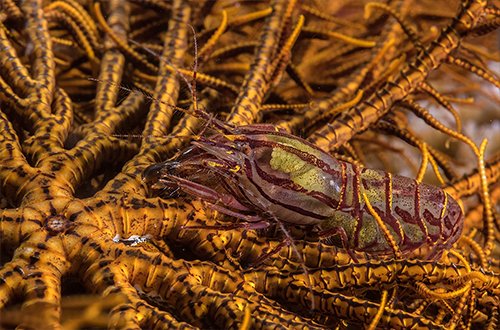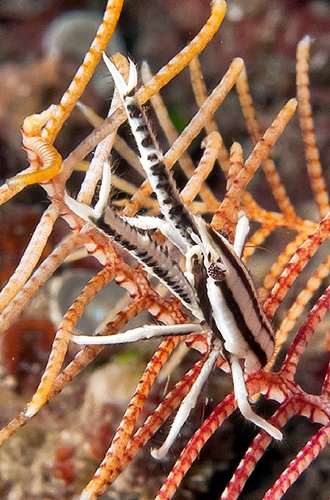Feather stars go back 485 million years in time and some have up to 200 arms, which they can regenerate if broken off. They enjoy current-rich locations, can be found singly or in groups of multiple species and genera.  Several species and genera together with a basket star
Several species and genera together with a basket star
They open their arms to feed, and close them for protection, they can both walk to new locations and in certain circumstance can also swim. Feeding is by catching current carried particles and plankton in mucous on their arms.
Feather Stars are also host to an entire microcosm of other animals that find shelter and food between the stars' arms and feet. It's quite astonishing to see just how diverse the community can be.  Alpheus stimpsoni
Alpheus stimpsoni
Many species of snapping shrimp tend to live around the legs while a gamut of Palaemonid shrimp genera and species wander around the arms. These are usually well camoflaged matching the host colour and pattern. Laomanes tigris
Laomanes tigris
Squat lobsters also enjoy the protection and food the feather star brings.  Allogalathea elegans
Allogalathea elegans
Clingfish are often found in the centre or between the legs. Discotrema crinophila
Discotrema crinophila
The most bizarre guests are myzostomid bristleworms. Generally small, they can be very fast moving and some look just miniature flying saucers. They are basically just worms with a body as wide as it is long, and with rounded "corners". Myzostomid bristleworm - upper side
Myzostomid bristleworm - upper side









